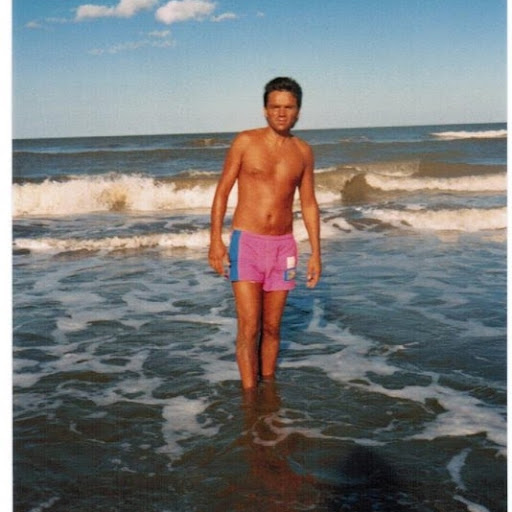Walter C Sanders
age ~83
from Venice, FL
- Also known as:
-
- Sanders C Walter
- Walter H
Walter Sanders Phones & Addresses
- Venice, FL
- Brackenridge, PA
- Allison Park, PA
- Wexford, PA
- Commack, NY
- Murrysville, PA
- 451 Pelican Moorings, Venice, FL 34285
Us Patents
-
Digital Air Brake Control System
view source -
US Patent:49040278, Feb 27, 1990
-
Filed:Oct 3, 1988
-
Appl. No.:7/252941
-
Inventors:Elmer T. Skantar - East Pittsburgh PA
Walter J. Sanders - Jeannette PA -
Assignee:American Standard Inc. - Wilmerding PA
-
International Classification:B60T 1514
B60T 1368
B60T 1558 -
US Classification:303 15
-
Abstract:A pneumatic pressure control arrangement for controlling the brakes of railway vehicles. A manual brake command controller converts a selected brake position into a corresponding electrical signal. An application magnet valve is connectable to a source of air pressure and to a storage device. A release magnet valve is connectable to atmosphere and to the storage device. An electropneumatic transducer senses the pressure in the storage device and provides a feedback signal. A microprocessor receives and compares the electrical signal with the feedback signal to develop an error signal which initially energizes the application magnet valve and the release magnet valve upon request of braking effort, and which subsequently pulses the application magnet valve when the pressure in the storage device is within a preselected control range, and which finally deenergizes the application magnet valve when the pressure in the storage device is within a preselected deadband range to cause a lap condition.
-
Pulse Train Presence Detector
view source -
US Patent:46850520, Aug 4, 1987
-
Filed:Feb 19, 1985
-
Appl. No.:6/702530
-
Inventors:Walter J. Sanders - Jeannette PA
-
Assignee:American Standard Inc. - Wilmerding PA
-
International Classification:G06F 1130
-
US Classification:364426
-
Abstract:A pulse train presence detector for a system having a number of interruptible devices, consists of a pulse generator, interface device which receives a periodic trigger signal and outputs a pulse train signal in response thereto, the pulse train signal is communicated to an NPN transistor and operates the transistor to alternating "on" and "off" states. A first current path is established during the transistor "off" state through which a first current flows and charges a first capacitor. A second current path branches off from the first current path, wherein a second current flows when the transistor is "on". A forward-biased diode in the first current path and an adjacent reverse-biased diode in the second current path block cross-flowing of currents between the respective paths. A second capacitor in the second current path is charged when the transistor is "on". The current in the second path flows as a result of the charged first capacitor in the first current path, this second current serving to energize relay and to charge the second capacitor.
Name / Title
Company / Classification
Phones & Addresses
Treasurer
LIBERTY INTERNATIONAL, INC
6270 Lk Osprey Dr, Sarasota, FL 34240
16528 N Dl Mabry Hwy, Tampa, FL 33618
16528 N Dl Mabry Hwy, Tampa, FL 33618
Treasurer, Director
BRADEN RIVER DENTAL, INC
3720 53 Ave E, Bradenton, FL 34203
16528 N Dl Mabry Hwy, Tampa, FL 33618
16528 N Dl Mabry Hwy, Tampa, FL 33618
Lawyers & Attorneys

Walter Alfred Sanders - Lawyer
view sourceLicenses:
Virginia - Authorized to practice law 1985

Walter Sanders - Lawyer
view sourceSpecialties:
Administrative Agency Practice
Federal Administrative Law
Consumer Protection
Government Relations
Legislative Practice
Lobbying
Public Policy
Federal Administrative Law
Consumer Protection
Government Relations
Legislative Practice
Lobbying
Public Policy
ISLN:
909749765
Admitted:
1985
University:
Rutgers University, Eagleton Institute of Politics, M.A., 1976; University of California, Riverside, B.A., 1975; University of California, Riverside, B.A., 1975
Law School:
Washington College of Law, American University, J.D., 1985
Classmates

Walter Sanders
view sourceSchools:
Frazier High School Covington TN 1965-1969
Community:
Jesse Tipton, Kenneth Stokes, Janice Thompson, Theodore Jordan

Walter Sanders (Walter Sa...
view sourceSchools:
Mt. Zion Institute Winnsboro SC 1956-1960
Community:
Marie Mincey, Sandra Walsh, Dorothy Dot

Walter Sanders
view sourceSchools:
New Auburn High School New Auburn WI 1944-1948
Community:
Kenneth Ken, Charles Marlette, Loris Frank, Cathy Siverling

Walter Sanders (Mario)
view sourceSchools:
Ollivier Junior High School Bakersfield CA 1999-2000
Community:
Amy Wilcox, Chris Hearn

Walter Sanders
view sourceSchools:
North Panola High School Sardis MS 1959-1963
Community:
Susan Butler, Bemis Bradley, Audrey Anderson

Walter Sanders
view sourceSchools:
McComb High School Mccomb MS 1982-1986
Community:
Ophelia Erwin, Timothy Pigott

Walter Sanders
view sourceSchools:
Talley Middle School Wilmington DE 2004-2008
Community:
Dawn Pinghera, Kevin Wiberg
Youtube
Flickr
Plaxo

Walter Sanders
view sourceEastern PennsylvaniaCo-Founder at PergolaWest Past: Vice President Corporate Affairs at Citigroup Diners Club International Seasoned corporate wordsmith with boardroom-level communication and persuasion skills.

Walter Sanders
view source
Walter Sanders
view source
Walter Sanders
view source
Walter Sanders Funeral Home
view source
Walter Neff Sanders
view source
Walter Mugg Sanders
view source
Walter SoReckless Sanders
view source
Adelita Restaurante Walte...
view sourceMyspace
Googleplus

Walter Sanders

Walter Sanders

Walter Sanders

Walter Sanders

Walter Sanders

Walter Sanders

Walter Sanders

Walter Sanders
Get Report for Walter C Sanders from Venice, FL, age ~83


















